Never mind its cough-syrupy taste, or its tongue-twister of a name, a Rhododendron in flower is inspiration enough to walk the Himalaya, or the Nilgiris
“…so there you are they might as well try to stop the sun from rising tomorrow the sun shines for you he said the day we were lying among the rhododendrons on Howth head in the grey tweed suit and his straw hat the day I got him to propose to me yes first I gave him the bit of seedcake out of my mouth and it was leapyear like now yes 16 years ago my God after that long kiss I near lost my breath yes he said was a flower of the mountain yes so we are flowers all a womans body yes that was one true thing he said in his life and the sun shines for you today…”
James Joyce, Ulysses
“It tastes like cough syrup.”
This seemingly innocuous announcement, delivered in a firm matter-of-fact tone, had pushed me dodderingly close to an anticlimax which I feverishly wished I could avoid. Sunita, my birding guru and guide in matters natural, is a person of few words. Few — but measured, accurate, and almost always correct.
I had waited for this moment for years. Since my early teens, I had read this unpronounceable name for a flower (and tree) which was exotic even by the standards of Latin appellations that scientists bestow on their discoveries, partly to lend them weight (often unwarranted mystique) and partly as a practical joke for anyone outside the sacred precincts of the Vatican, especially for the unsuspecting Chinese. I had in my hand a bottle of deep-red, sugary syrup (I suspect it was Rooh Afza, the staple middle-class cooler till the 1980s when the cute Rasna girl dethroned it) and happened to, rather uncharacteristically, glance at the list of ingredients. “Rhododendron juice” was a little way down among some 15 list entries. I did not conjure up an image, it was too foreign a name to be able to think of anything really, the name itself became the image – the drumming Ds, the guttural R in the beginning and the middle one sputtering away on the highway of a spelling and an ending that was somewhat sinister like being placed at the edge of a yawning abyss. RHODODENDRON. I have carried it ever since – as a presence in my subconscious, imagined as the enigmatic essence of the Himalayas, a mysterious ingredient of age-old recipes, an unreachable lovely scarlet flower like no other. I could go on.
And when the blessed hour came knocking, I was to welcome it fraught with the sacrilegious suggestion regarding its flavour (rather the lack of any)!
Better let that episode be and talk about other things.
Surprisingly, my first significant encounter with Rhododendrons was not during my first Himalayan trek or the second (not counting the juice episode). And when I became truly aware of their significant presence in that high altitude ecosystem it was not due to the exquisite scarlet flowers but another incredibly coloured species – the Himalayan Monal (Lophophorus impejanus). Rhododendrons gifted us our first and, to date, most satiating sighting of this wonderful bird. On a post-monsoon trek to Tungnath, we discovered that the dwarf rhododendrons occupying the slopes stretching downward from the small settlement near the shrine held not just monals but other treasures. We soon developed “rhododendron birding” as a class of its own and now look forward to it on our treks, especially as we scale altitudes of 3,500 metres and above. Rhododendron clusters have never ceased to reward and surprise and over the years we have had lovely moments with the Golden Bush Robin (Tarsiger chrysaeus), Himalayan Bluetail (Tarsiger rufilatus), the incredibly glowing Yellow-bellied Fantail (Chelidorhynx hypoxantha), Rufous-bellied Niltava (Niltava sundara), Chestnut-tailed Minla (Minla strigula) and Black Redstart (Phoenicurus ochruros), to name a few.
In late May 2012, we Ogres made our way to Dhel Thatch campsite at approximately 3,500 m (11,483 feet) in the Great Himalayan National park. We passed an undulating flower-suffused, picture-perfect meadow etched out clear and vibrant in the bright mountain light, and entered a dark patch of mixed forest. The canopy was thick with handsome oak crowns and a few stately deodars breaking through. The air was still, the forest silent and an occasional ray pierced the canopy to light up the dappled forest floor. As I wiped the sweat dripping from my brow and looked ahead to take in the view, I saw them. All through the soft darkness of the forest and along the gentle winding path, dwarf rhododendrons were in flower. Rhododendron bushes, thin leafless stalks in tight clusters were strewn all over the small forested slope, and ineffably white trumpet-like flowers lit from their ends. The sheer surprise of this spectacle was dizzying. I had neither expected to see the dwarf rhododendrons in flower nor had ever imagined them to be so white. But here they were, each shining with its own mysterious inner source of light, their radiant splendor stunning my senses and summoning the pilgrim in me to a hushed hymn.
I had neither expected to see the dwarf rhododendrons in flower nor had ever imagined them to be so white. But here they were, each shining with its own mysterious inner source of light, their radiant splendor stunning my senses and summoning the pilgrim in me to a hushed hymn.
On closer observation, I spied faint traces of pink in a few of them and some lilac blooms. Occasionally there was a tight, deep-pink bud. It appeared to be the end of the season; the lilac had given way to unsullied white in this part of the forest. The blooms I witnessed were the last few of the season and unlike many flowers that lose colour in their death throes and shrivel up like crumpled shirts, the rhododendrons not only held their form but glowed in a sudden burst of energy and light; like a star collapsing under its own weight, giving up the last reserves of energy in a final burst – shining brighter than it ever shone in all its life.

As a birder I have always been intrigued by species that are found in the Himalayas and Western Ghats (many, if you look at closely related species too) but nowhere in between. There is the Great Hornbill, Grey-Headed Canary Flycatcher, the closely related Malabar and Blue whistling thrush to name a few. Rhododendron nilgiricum, found in the thick sholas at 8,000 feet in Eravikulam and Mukurthi National Parks, is one such species. Its bright red blooms brighten up the deep green shola canopy in January and it is locally known as Pongal Poo, after the Tamil New Year festival. I have not seen them yet but I know for sure that folks down south have smartly avoided the cough-syrup dilemma but simply not putting it to any such use. That has been a big help since I safely park my predicament for most of the year until I confront it again on the annual Himalayan pilgrimage.

PS:
A group of birders and their spouses at Eaglenest Sanctuary, Arunachal Pradesh
Birder A: “Can you check out that finch on the Rhododendron?”
Birder B: “That’s the Scarlet Finch. What a beauty!”
Next morning as the group prepares to depart.
One of the ladies excitedly points out a Rhododendron flower to her friend: “Look, what a lovely Scarlet Finch!”
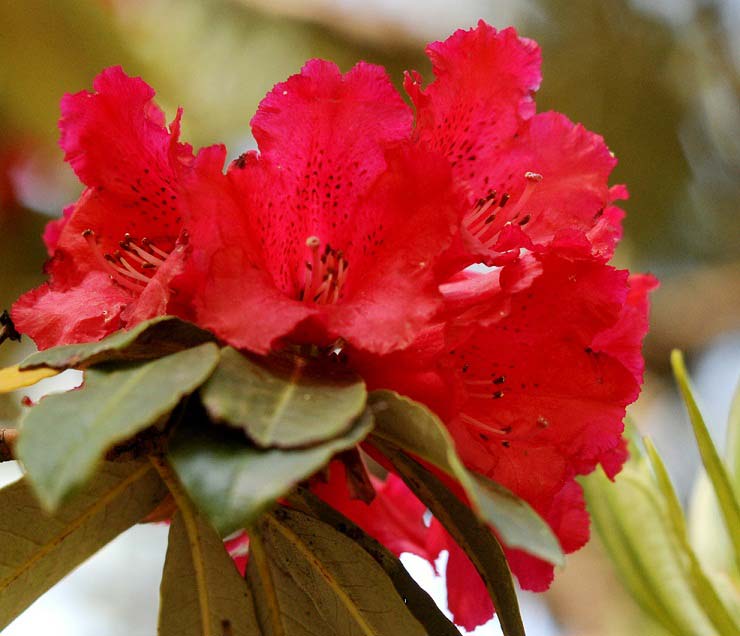

Text and photographs by Sahastrarashmi
Photos of Rhododendron nilgricum by Bijoy Venugopal
Enjoy the Rhododendron photo-gallery. Click and scroll to view the images in large size and hit the Esc key to return to the page.
- Encounter: The Sacred Grove at Oorani - November 28, 2012
- Encounter: Rhododendron, sentinel of the highlands - October 7, 2012
- Manjhi Akshayavat, an immortal Banyan tree - July 17, 2012


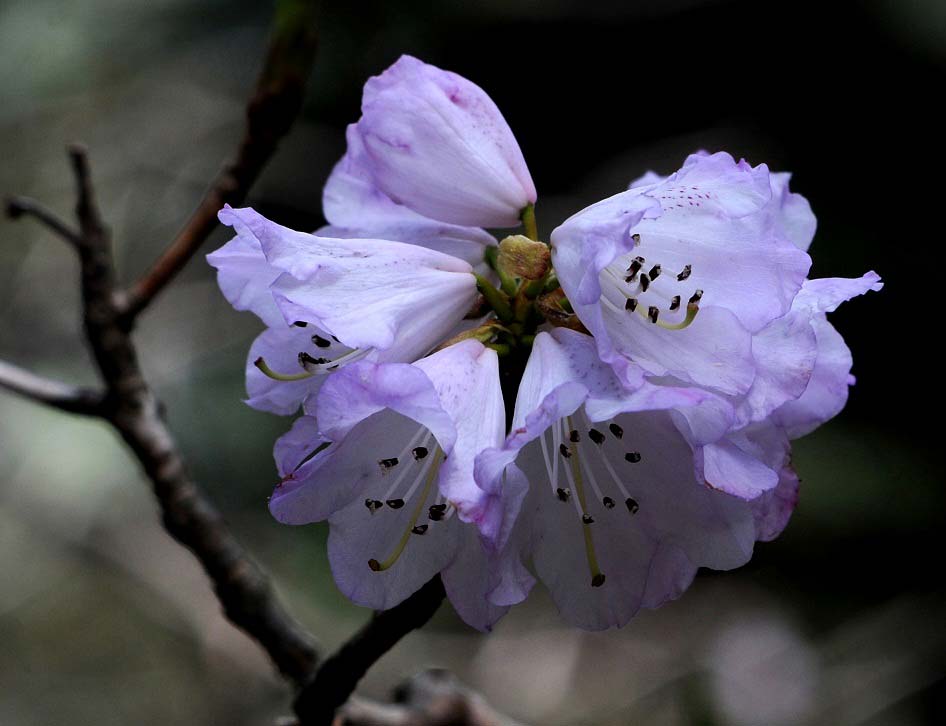



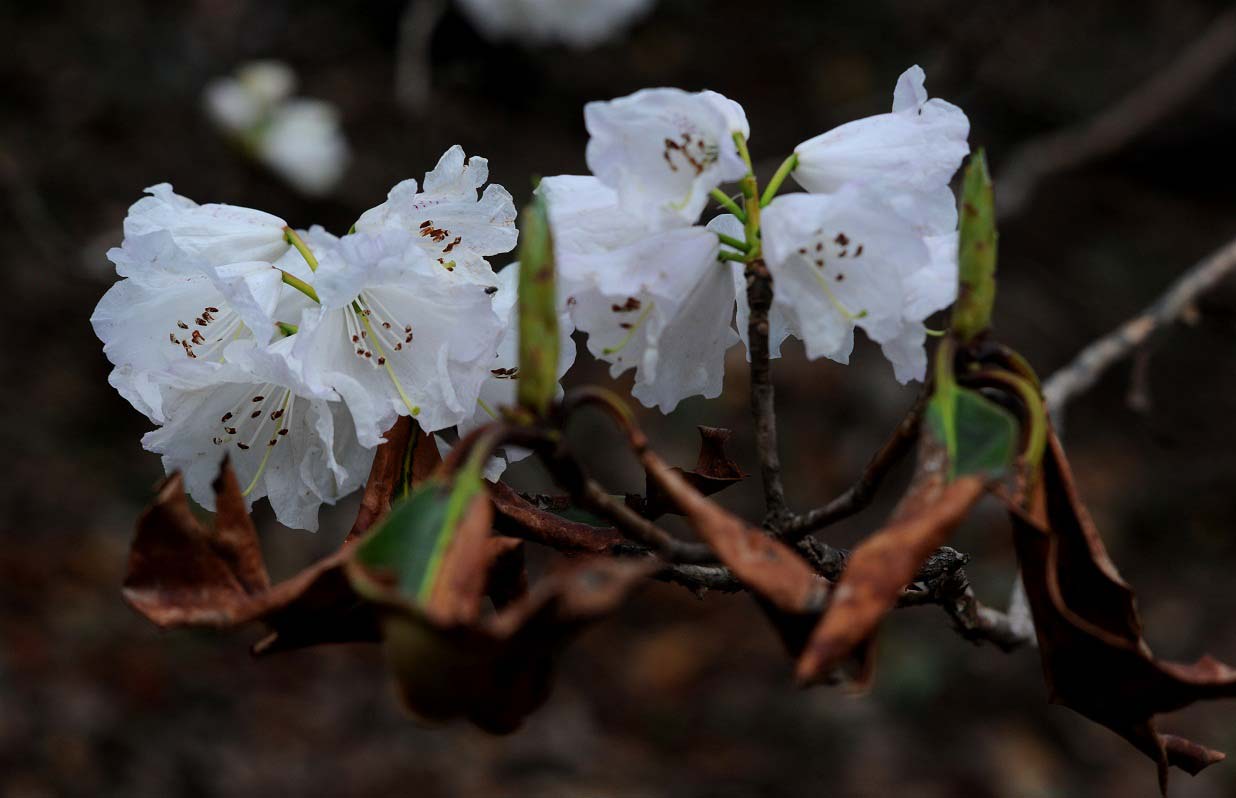


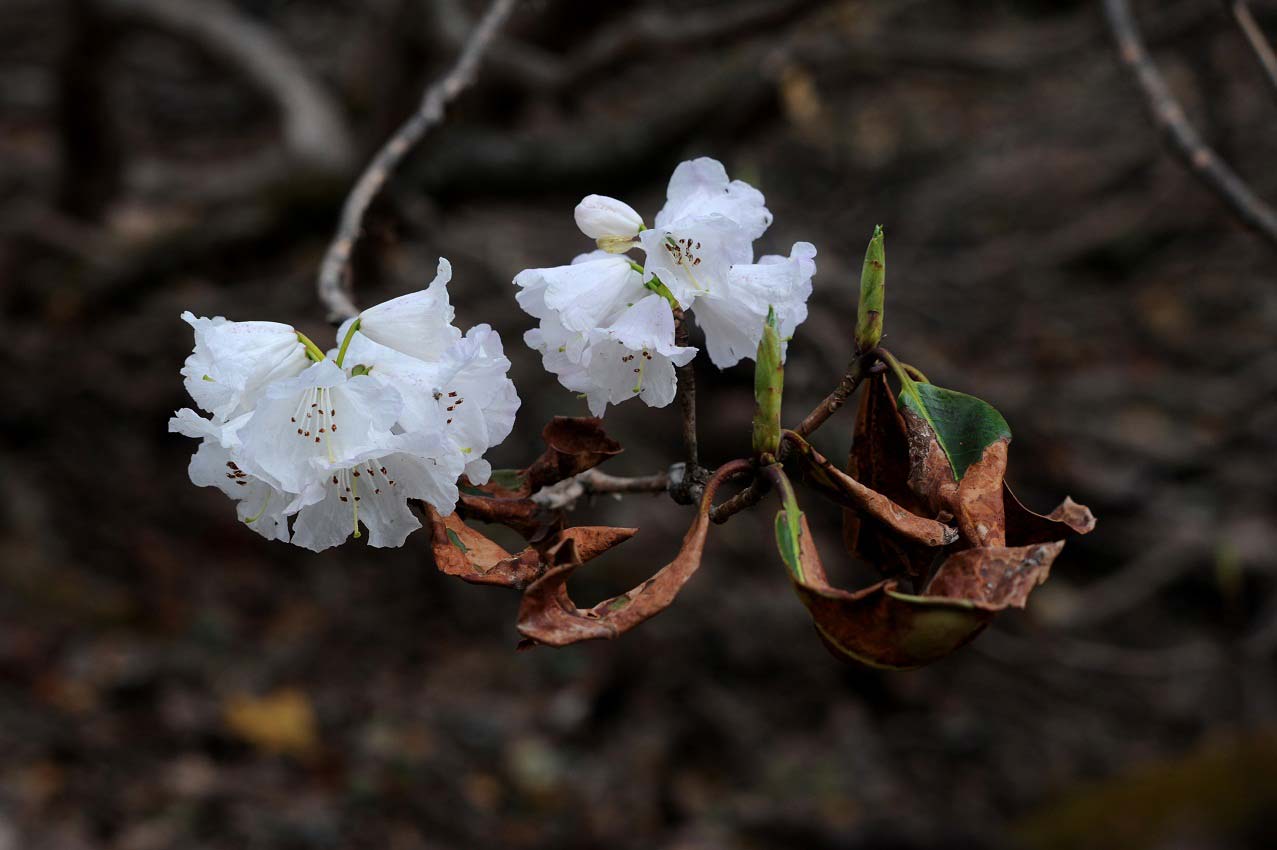










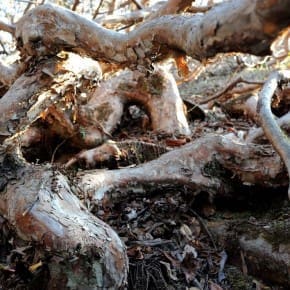
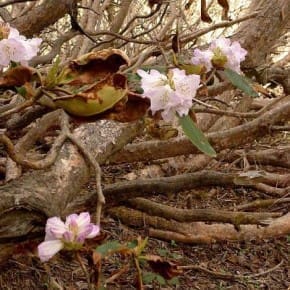



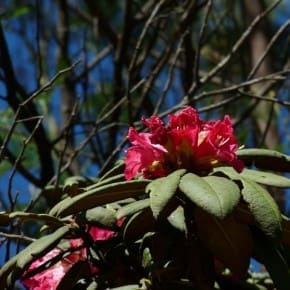
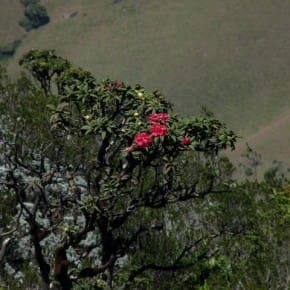
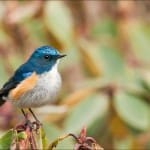
One thought on “Encounter: Rhododendron, sentinel of the highlands”